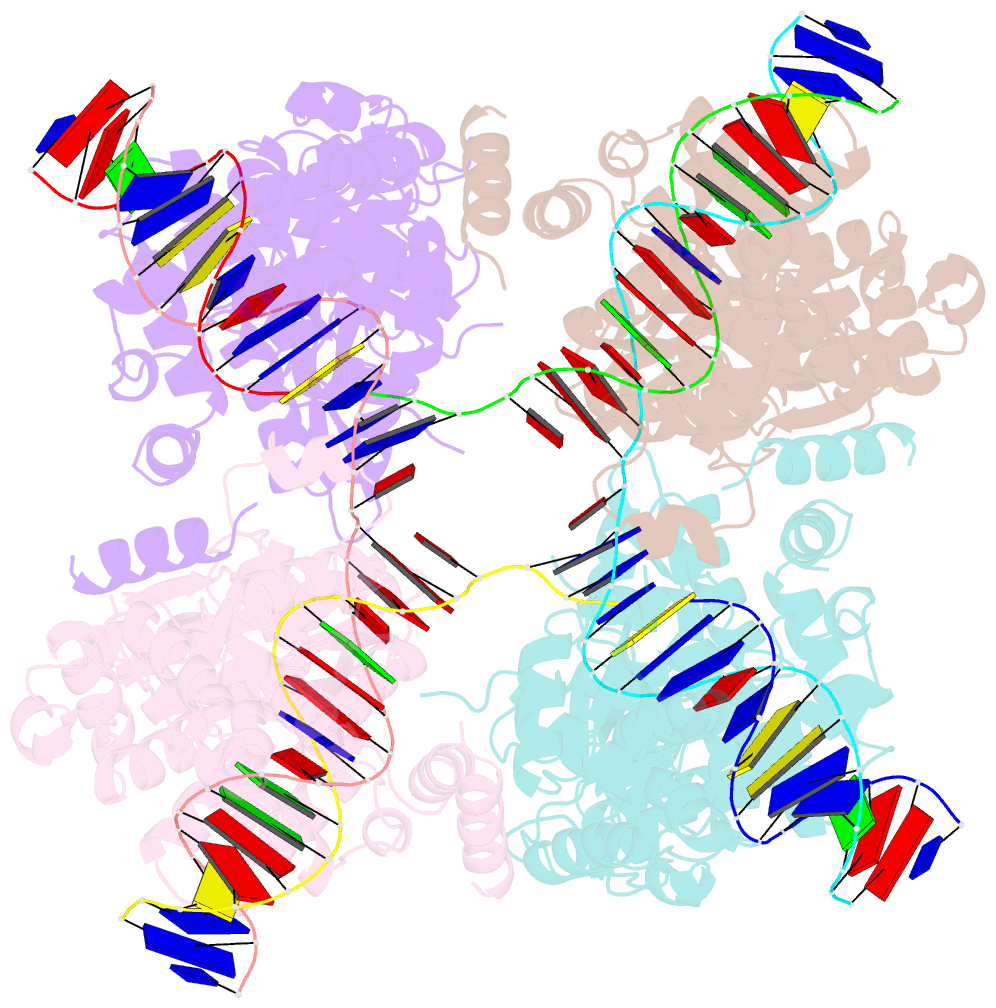Summary information and primary citation
- PDB-id
- 1m6x; SNAP-derived features in text and JSON formats;
DNAproDB
- Class
- ligase, lyase-DNA
- Method
- X-ray (2.8 Å)
- Summary
- Flpe-holliday junction complex
- Reference
- Conway AB, Chen Y, Rice PA (2003): "Structural Plasticity of the Flp-Holliday Junction Complex." J.Mol.Biol., 326, 425-434. doi: 10.1016/S0022-2836(02)01370-0.
- Abstract
- The Flp recombinase, a member of the lambda integrase or tyrosine-based family of site-specific recombinases, is an interesting example of an enzyme whose catalytic activity is regulated by protein-protein contacts. It exhibits half-of-the-sites activity throughout its catalytic cycle. Flp is unique among these recombinases, in that it assembles each active site in trans through the interaction of two protein monomers within the catalytic tetramer, with isomerization of interacting pairs being essential to complete a full reaction. We report here the structure of a DNA-bound tetramer of Flpe, a variant of Flp that is more active at 37 degrees C than the wild-type recombinase. This new structure includes the first observation of a tyrosine recombinase with an invading 5'-OH poised to attack the covalent phosphotyrosine residue. Comparison with the previously determined Flp structure highlights differences in flexibility between the two types of protein-protein interfaces in the tetramer and better defines the range of conformations available to this remarkably flexible complex. These results suggest a steric occlusion model for enforcement of half-of-the-sites activity.





